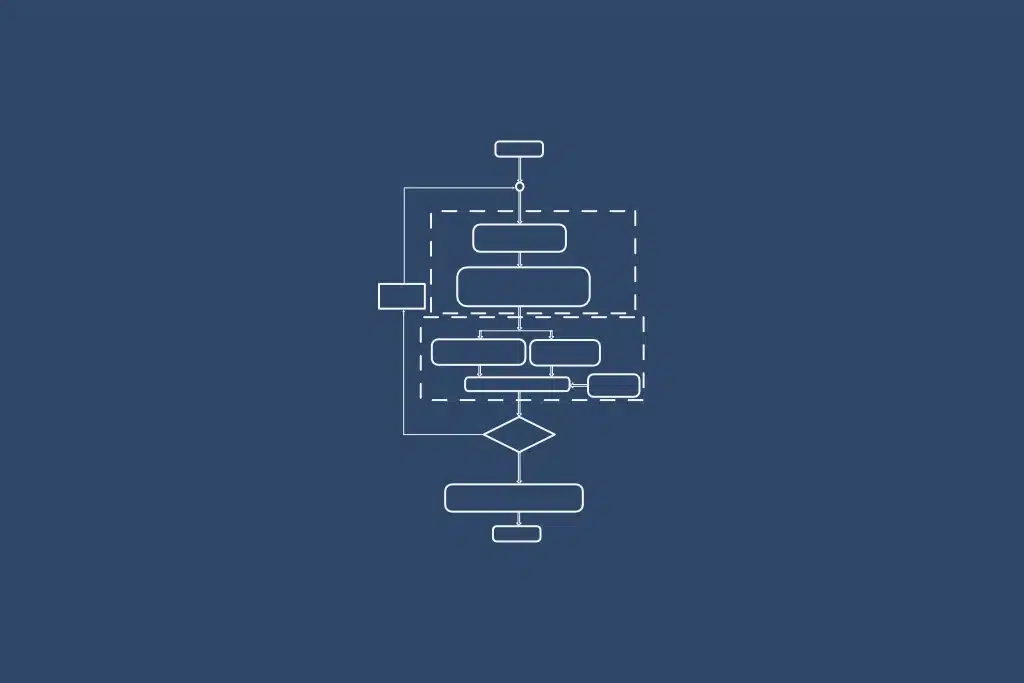ATEX is the name given to the European Directives to ensure that all EU member states create appropriate legislation so that employees are protected from fires and explosions caused by work activity.
Compliance is implemented in the UK through the Dangerous Substances and Explosive Atmospheres Regulations 2002 (DSEAR).
Both of these assessments are, in essence, systematic reviews of processing operations with respect to the industry handling dangerous substances in potentially explosive atmospheres.
These risk assessments are used to prevent fires and explosions and usually address the following subjects listed in this article both systematically and pragmatically.
What is a flammable atmosphere?
A flammable atmosphere refers to an environment where the presence of flammable materials or dangerous substances present in the workplace, such as gases, vapours, mists, or dust, can create a potentially explosive or dangerous atmosphere.
The concentration of a particular material in the air must be sufficient to allow ignition by a source of flame, spark, or heat.
The ATEX directives define an explosive atmosphere as:
“Mixture with air, under atmospheric conditions, of flammable substances in the form of gases, vapours, mists or dust in which, after an ignition has occurred, combustion spreads to the entire unburned mixture.” (ATEX 114 – article 1.3 & ATEX 153 – article 2)
And a potentially explosive atmosphere as:
“An atmosphere that could become explosive due to local or operational conditions.” (ATEX 114 – article 1.3)
What is an ignition source?
A source of ignition refers to anything that has the potential to cause the ignition of a flammable or combustible substance.
This in turn will lead to serious fire and explosion risks. If an object, event, or condition can supply the necessary heat, spark, or flame with enough energy, it can ignite a flammable atmosphere.
Typically, there are thirteen effective ignition sources as stated in the standard EN1127.
The keyword here, however, is effective. For many ignition sources, such as spark discharges and mechanical sparking, its effectiveness will ignite a flammable atmosphere.
What is the basis of safety?
In an ATEX or DSEAR risk assessment document, a basis of safety must be defined.
A basis of safety is a concept or philosophy that usually comes in two layers (like most safety systems).
A basis of safety should include a primary and a secondary layer, and they usually come in three different variations:
1) Avoidance of flammable atmospheres i.e. inertion
2) Avoidance of effective ignition sources i.e. control of ignition sources
3) Explosion protection i.e. suppression, venting and containment
The basis of safety is the foundation for ensuring health and safety in the working environment.
It represents the underlying framework or guidelines that instruct decision-making, risk assessments, and risk management processes.
Hazardous Areas
The next stage of ATEX/DSEAR documentation is the classification of hazardous areas.
This section outlines the physical extent of a hazardous zone in a facility or unit operation.
By identifying the hazardous area, we can then determine what ignition sources could be in that predefined physical location.
What is a DSEAR/ATEX Review?
For a typical facility, a DSEAR or ATEX review is undertaken in 2-4 years cycles.
There are two types of reviews.
One is conceptual and is usually undertaken during the design stage.
In the UK, this is called a desktop DSEAR and its primary purpose is to give clients an idea of what type of equipment and zonings should be accounted for.
The second type of review is a site verification DSEAR.
This is typically completed independently and during commissioning and operations.
Why is a DSEAR/ATEX review required?
A major reason why DSEAR reviews are required is that specific elements can be missed from previous ATEX/DSEAR assessments.
A common theme that is usually missed from DSEAR assessments are electrostatic hazards.
This may include low energy ignition risks, changes to the insulating/conducting properties of a material or poorly maintained earthing continuity.
In many cases, DSEAR assessments are completed on the day.
This ultimately overlooks non-routine operations such as maintenance, cleaning, changes to a process or the credibility of previous maintenance or inspections undertaken.
As an example, regular electricians may have completed a designated CompEx-certified task or general housekeeping/cleaning has not been done to a high enough standard.
Why is a DSEAR/ATEX review required? Other considerations
Some other considerations for why a DSEAR review may be required include:
1) Ensuring the safe operation of a facility.
This must include general explosive atmosphere safety and control risks, process hazard risks and material hazard risks.
2) DSEAR reviews are a legal requirement for HSE compliance.
The equipment used in potentially flammable atmospheres must comply with the Equipment for Use in Potentially Explosive Atmospheres Regulations (EPS).
3) Aids in training and awareness for personnel at the facility.
This is especially true in regard to atmospheric explosions.
4) Insurance requirements may help in reducing premiums
From our experience speaking with clients, insurers are increasingly dissatisfied with inadequate DSEAR assessments as they often do not cover a range of standard DSEAR risk assessment practices.
5) It compliments other process safety control measures and engineering packages for a facility
This may include risk assessments such as the HAZOP study, HAZID study or a Layers of Protection Analysis (LOPA).
When is a DSEAR/ATEX review required: what are unit operations?
A facility usually has defined unit operations. They are typically the following (but not limited to):
1) Material loading/storage i.e. a tanker filling a silo
2) Material transfer i.e. liquid pumping or vacuum conveyance of bulk powders
3) Material processing, mixing and blending
4) Material collection i.e. downstream storage
5) Waste disposal
This, however, is a very broad concept that can happen in multiple stages. It could, for example, include gas processing or dust extraction/removal systems.
6) Facility heating & HVAC system
When is a DSEAR/ATEX review required: changes to unit operations
It must be remembered that all unit operations can change, and a DSEAR review must be undertaken whenever this occurs.
1) The introduction of a new process(es), material(s) or equipment.
This can have many implications for a DSEAR risk assessment review as changes may have consequences that will impact a hazardous area classification or a predefined basis of safety.
Milling example
Take a business that is milling a particular product for years.
Then, they suddenly want to mill that same product finer, let’s say a change from 10 microns to 3 microns.
As the particle size of the product changes, the minimum ignition energy (MIE) of the product will make it far more sensitive to ignition.
As mill manufacturers usually establish a specific MIE, anything above that MIE will require new alternative equipment with a suitable ATEX rating.
Even though it is the same process, the basis of safety is invalid because of the risk caused by the change in product milling size.
2) Degradation of existing equipment
You must think about equipment degradation. Not only can product efficiency degrade, but reaction times can too. Degradation in regards to control valves reacting to alarm systems is an example.
3) Changes to an existing process
If operating procedures have changed, which may include temperature or a move from automation over manual operations, then the extent or likelihood of a hazardous area being present alters.
4) Changes in Standard Operating Procedures (SOPs)
5) Changes in facility layout/ventilation characteristics
6) Changes to storage conditions
For example, you have a silo storage unit fitted with explosion vents that are sized using explosivity data (Pmax and Kst).
Flour storage example
If the flour in storage has changed, even if it is the same type of flour but with a different particle size or Pmax and Kst rating, then we need to be sure that any vents that were originally fitted are still suitable.
Flammability data is needed to ensure that you can create or keep a valid basis of safety for your flour storage.
In this example, the safety case is explosion protection and this is controlled using appropriately sized vents.
7) Changes in conveyance methods
When a change occurs, it can affect the size and extent of a flammable atmosphere. It could be as simple as the physical size of the explosive atmosphere decreasing or increasing. This in turn will affect the likelihood of an explosive atmosphere, which can impact the equipment and the inherent sources of ignition.
New protection equipment
New, equipment and protective while may potentially be needed when there are changes to a hazardous area.
This will help ensure compliance with safety regulations, address lifecycle and maintenance concerns, and meet changing operational requirements.
These factors collectively contribute to maintaining a safe and efficient working environment in hazardous areas.
Other reasons for rating protection equipment correctly may include:
1) Impact of the extent of a hazardous area and zonal classifications
2) Existing protection systems may not be rated or sized appropriately
3) Basis of safety can be compromised and thus no longer valid
New effective ignition sources
When change occurs, new effective ignition sources can be introduced to your unit operations and this can make your materials more sensitive to ignition.
Typically, this occurs with the following types of ignitions:
1) Hot surfaces – motors within a shaft, bearings in a mixer
2) Mechanical sarking – heat through friction generating a spark
3) Electrostatic discharges – propagating brush discharges
4) Unsuitable electrics
Outcomes of a DSEAR review
The outcomes of a DSEAR review can vary depending on the specific circumstances and findings.
However, there are some common outcomes and significant findings that usually arise:
1) A revision of the basis of safety to ensure that it is valid
2) If the material has changed, it is prudent to obtain updated flammability data to ensure the basis of safety is achieved. The question to ask is ‘Is my equipment suitably rated for new materials?’
3) Ensure electrostatic hazards are removed or properly controlled
4) If an inerting system has changed, then you may need to conduct further Safety Integrity Level (SIL) studies
5) A change to the Standard Operating Procedures (SOPs) may need to be undertaken
6) A review of ventilation characteristics & facility layouts may be needed
Conclusion
You need to stop and think about the changes that you have made to your process.
Even if it is a small change, it may have the potential to impact your basis of safety and sometimes, it may even negate and/or remove it.
This is especially true when you are changing the flammability properties of a material via different suppliers or particle sizes.
Any small change should lead to a review of your DSEAR assessment.
Remember, multiple small changes that build up over time may lead to a completely different process – this is why you should undertake a thorough DSEAR assessment every 2-4 years.
DSEAR risk assessments as a living document
A DSEAR review should be considered as a living document that never should be on the shelf for too long.
They must always be updated so that if someone was to pick up the document, they should see a direct relationship between the documentation and what is live on site.



